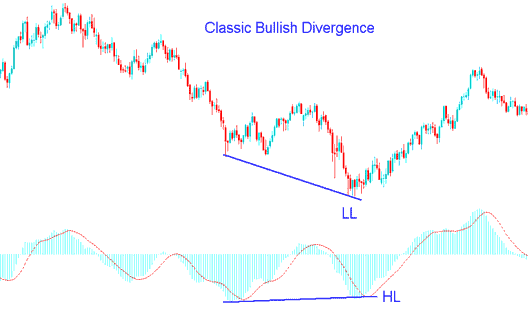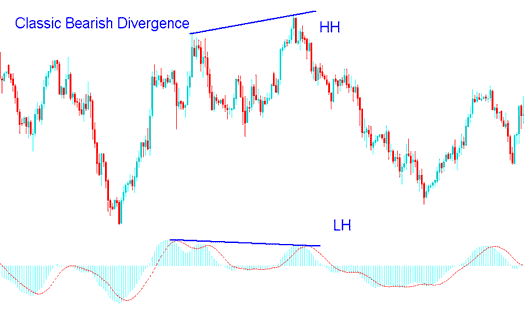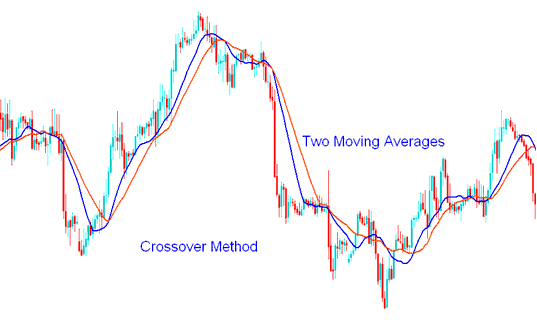How to Trade Oil Classic Bullish Divergence and Bearish Divergence
In oil trading, classic divergence is used as a possible signal for a oil trend reversal and is used by oil traders when looking for an area where crude price could reverse and begin going in the opposite direction. For this reason this oil setup is used as a low risk entry method and also as an accurate way of exit out of a trade.
This strategy is a low risk technique to sell near the top or buy near the bottom, this makes the risk on your trades are very small relative to the potential reward. However, this is one method with very many whipsaws & most traders do not recommend using it.
Divergence in Trading is also used to predict the optimum point at which to exit a trade. If you already have an open trade that's already profitable, a good way to identify a profit taking level would be the point where you identify this crude trade setup.
There are two types, based on the direction of the trend:
- Classic Bullish divergence
- Classic Bearish divergence
Crude Oil Classic Bullish Divergence
Classic bullish divergence setup forms when crude price is forming lower lows ( LL ), but the oscillator is making higher lows (HL). The example shown and illustrated below shows a picture of this crude trade setup.

Oil Classic Bullish Divergence
This examples uses MACD indicator as a Oil Trading divergence indicator.
From the above example the crude price made a lower low(LL) but the indicator made a higher low(HL), this displays there's a divergence between the crude trading price & indicator. This signal warns of a possible trend reversal.
Classic bullish diverging signal warns of a possible change in trend from down to up. This is because even though the crude price went lower the volume of sellers that pushed the crude trading price lower was less as illustrated by MACD indicator. This demonstrates underlying weakness of the down ward crude trend.
Classic bearish Trade Divergence Setup
Classic bearish divergence setup occurs when crude price is showing a higher high ( HH ), but the oscillator is lower high (LH). The image below shows an example of the setup.

Oil Classic Bearish Divergence
This examples also uses MACD indicator
From the above example the crude price made a higher high(HH) but the indicator made a Lower High(LH), this displays there's a divergence between the crude trading price & indicator. This signal warns of a possible trend reversal.
Classic bearish diverging signal warns of a possible change in the trend from up to down. This is because even though the crude price went higher the volume of buyers who pushed the crude price higher was less as shown by the MACD indicator. This indicates underlying weakness of the upward crude trend.
In the above examples, if as a trader you had used divergence trade setup to trade you would have gotten good signals to enter or exit the trades at an optimal point. However, divergence signals just like other indicators, is also prone to whipsaws. That is why it is always good to confirm the diverging signals with other indicators such as the RSI, Moving Averages and Stochastic Oscillator.
A good indicator to combine classic diverging setups is the stochastic oscillator and wait for the stochastic lines to move in the direction of the divergence signal so as to confirm the signal.
Another good technical indicator to combine with is the moving average indicator, in this indicator a trader should use the MA Cross Over System
Examples of MA Crossover Strategy Method Strategy

Once the divergence trading signal is given, a trader will then wait for the Moving average crossover system to give a signal in the same direction, if there is a classic bullish setup, a trader will wait for the moving average system to give an upwards crossover signal, while for a bearish classic divergence signal the trader should wait for the Moving average crossover system to give a downwards bearish crossover trading signal.
By combining the classic divergence signals with other technical indicators this way, a trader will be able to avoid whip-saws when it comes to trading the classic diverging signals, because the trader will wait until the market has actually reversed and is already moving towards this direction, hence the trader will not fall into the trap of picking market tops and bottoms.




